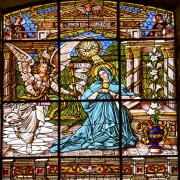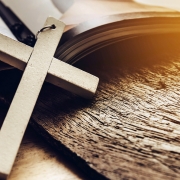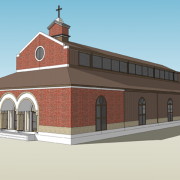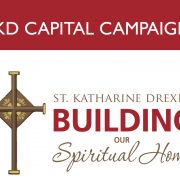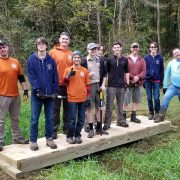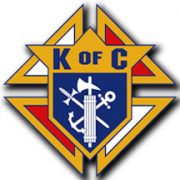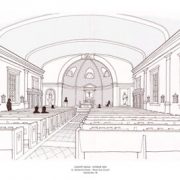Annunciation – 2020
It was a most propitious sign that the ships The Ark and The Dove, transporting the Jesuit, Fr. Andrew White and the first governor of the Maryland Colony, Leonard Calvert et al. landed on the north shore of the Potomac, St. Clement’s Island, March 25 (the Feast of the Annunciation), 1634. The occasion was the fruit of much sacrifice. Over a hundred years of religious persecution, a failed colony in Newfoundland, many rancorous negotiations with the Crown and the Virginia Colony, a three month daring trip across the Atlantic that included surviving storms which separated the ships for weeks, finally the English speaking Catholics would have a place to call “home” in the New World, Maryland. They would be able to build churches and openly receive the sacraments. Various historical circumstances would quickly arrive to challenge this plan, but through a War of Independence, religious freedom would be established in our land.
Interestingly the man who brought about a Catholic Colony in America was the first Lord Baltimore, George Calvert (Leonard’s father). He would not live to see this dream realized. He died in 1632 from lingering complications of the plague that he had survived two years prior. The point that we can take from that interesting factoid is that a virus didn’t stop the dream.
Sacrifice may have been required but nevertheless the goal was accomplished.
The prophet Ezekiel had a vision of a temple from which blessings flow. The symbol for these blessings is water. The water comes from the temple and fills the earth distributing manifold blessings of life and healing. It makes barren lands, verdant, salt waters, fresh, trees ripe with year-round fruit and medicinal leaves. This same temple that Ezekiel describes has an east gate that he curiously mentions will remain shut. (Ez 47)
“Then He brought me back to the outer gate of the Sanctuary, which faces East; and it was shut. And He said to me, “This gate shall remain shut; it shall not be opened, and no man shall enter by it; for the Lord, the God of Israel, has entered by it; therefore it shall remain shut. Only the Prince may sit in it to eat bread before the Lord; He shall enter by way of the vestibule of the gate, and shall go out the same way” (Ez 44:1-3).
Many Church Fathers have taught that this eastern gate of the prophecy is the virgin birth of Christ. As our Catholic faith teaches, “the Blessed Virgin Mary is perpetually a virgin – she did not have relations with Joseph after Christ’s birth.” So according to Ezekiel’s prophecy, “God entered creation through her womb…. The “Prince” is Jesus. He “sits in it to eat bread before the Lord.” Christ was nourished in the darkness of her womb. He gained the flesh and blood that He would offer on the cross to His Father. The “bread” reference refers to Bethlehem (which means “house of bread”). It also points forward to the super-substantial bread of the Holy Eucharist which is His flesh and blood.” (https://taylormarshall.com/2009/12/virgin-marys-womb-as-ezekiels-closed.html)
The prophecy of Ezekiel has been fulfilled with the coming of the Christ. The Blessed Virgin Mary fulfilled the role of a gate that nobody but the Christ was to pass through. So she is that singular instrument through which all blessings flow. So she has been rightly heralded as the Mediatrix of All Grace.
God has chosen His Son to be the means of salvation for all. “There is no salvation through anyone else, nor is there any other name under heaven given to the human race by which we are to be saved.” (Act 4:12) God the Son chose no other means to enter the world than through the womb of the Virgin Mary. As unique as she is, her role was entrusted to another. The role of the Mother of God was given to the Church. E.g: “Go, therefore, and make disciples of all nations, baptizing them in the name of the Father, and of the Son, and of the holy Spirit, teaching them to observe all that I have commanded you. And behold, I am with you always, until the end of the age.” (Mt 28:19-20)
Jesus is uniquely manifest in the Church. “As sacrament, the Church is Christ’s instrument. She is taken up by him also as the instrument for the salvation of all, the universal sacrament of salvation, by which Christ is at once manifesting and actualizing the mystery of God’s love for men. The Church is the visible plan of God’s love for humanity, because God desires “that the whole human race may become one People of God, form one Body of Christ, and be built up into one temple of the Holy Spirit.” (Catechism of the Catholic Church 776)
The temple of the New Jerusalem is the Catholic Church. Interestingly outside one of the eastern gates of the Old Jerusalem is the traditional childhood home of the Blessed Virgin Mary. It is also the scene of one of our gospel passages set at a place called Bethesda. It means House of Mercy. It was the name of a healing pool. The House of Mercy that Jesus established takes His flesh and blood, His DNA, from the Blessed Virgin Mary. For a man who never married, how does this lineage continue?
The bloodline continues in the faithful. In English we might say that the House of Windsor has a branch in Canada, now that Prince Harry has moved out of Windsor Castle. The word “house” is synonymous with family. This is especially true for ancient tongues like Hebrew. The House of Mercy that Jesus established is generated from the blood and water that flowed from His side at Calvary. “Amen, amen, I say to you, no one can enter the kingdom of God without being born of water and Spirit.” (Jn 3:5) “For this is my blood of the covenant, which will be shed on behalf of many for the forgiveness of sins.” (Mt 26:28)
This House of Mercy, the Church, is up and running, yet many ignore it, are ignorant of it, or are bothered by it. The world, and we too, need a reminder of our precious and unique mandate. This doesn’t mean that the rest of the world is condemned, but it does mean that without us (the Church) their chances are greatly diminished.
God has a goal for the world and it is nothing less than many blessings, including salvation. I pray that our time away from familiar routines may reinvigorate our resolve to fight forces that impinge upon the source of happiness.
Bethesda, the healing pool that lies just outside of one of the eastern gates of Jerusalem, is presently owned by the White Fathers. The gate has had a few different names is history, but there is one that gets our attention, St. Stephen’s Gate. There is a stylized rendering of this gate in the floor of our church. This is the scene of the crime (Act 7:54) is where Saul (St. Paul) organized the stoning of the deacon Stephen.
Our forefathers, like Fr. White, won for us access to God’s many blessings through religious freedom. The challenge for us today is to combat the circumstances that demand freedom from religion. On this March 25, remember the blessings of Christmas, the feast of Emmanuel, God-with-us. The Annunciation, Mary’s, “Yes”, to God is where that begins. We ask her to help us say, “Yes” to God in all circumstances, and be open to receive His many blessings.

